Pablo Felgueres
I live in San Francisco and work on AI retrieval at Harvey. Before I spent a few years doing engineering for energy systems, particularly utility solar and combined heat and power. I love swimming in the bay, mtb, and reading; lately the Greeks and American history (send me a DM if you enjoy any of these too).
X: @pfelgueres

A personal twitter
What if you could have a private feed to post ideas without the self-sensorship of Twitter? Made one using a SQLite and a single html file. What’s cool is that SQLite is a single file that could live almost anywhere. For example, you can host it directly on the browser, or maybe port it onto a web service. I’m excited to discover ways to make these thoughts programmable.
The UI is inspired by usgraphics.com:
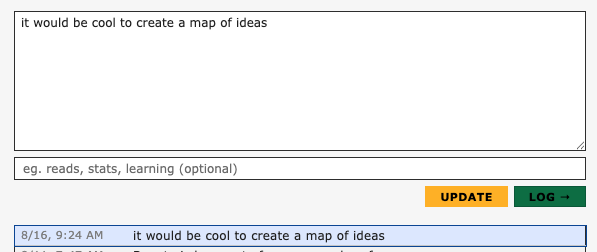
Here’s the live feed with the last 10 posts.
The Frontier
One of the great American myths is the frontier line. A place between civilization and wilderness where ingenuity and self-reliance emerge to win over nature.
Frontier men yearn discovery and progress, and by leaving the established world behind, they reinvent the institutions that no longer serve their new course.
There is no physical boundary left like the Wild West once was, but the story simmers in the minds of pioneers at the call of something new to bet their lives on.
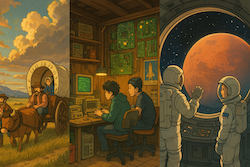
What to read?
I like to read mostly out of curiosity and entertainment. I’ve never had a plan or been intentional, it’s on demand.
Here’s the last ~5 years with my favorites in green:
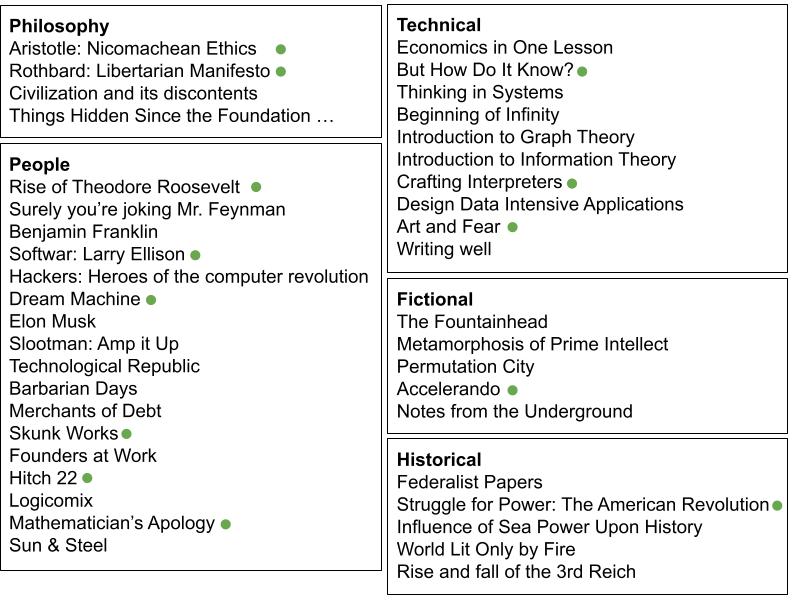
But a few ideas have grown along with me and I realize that curation and sequencing would be benefitial for learning.
So these are my reads for the next few years:

Instead of only curiosity, there’s a means to an end, which currently sums to something like this:
- Understand what made the West great and what are its likely threats
- Develop an ability to synthesize ideas into new theses and implications
LLM native bookshelf
I want an effortless way to revisit reads, search, and find evidence in favor or against ideas. There’s so much friction on Kindle that this space seems very unexplored.
Started by making a tool that scrapes my Kindle notes to use with LLMs.
- Gets highlights, notes, and metadata
- Keyword search across books
- LLM explains highlighted sections
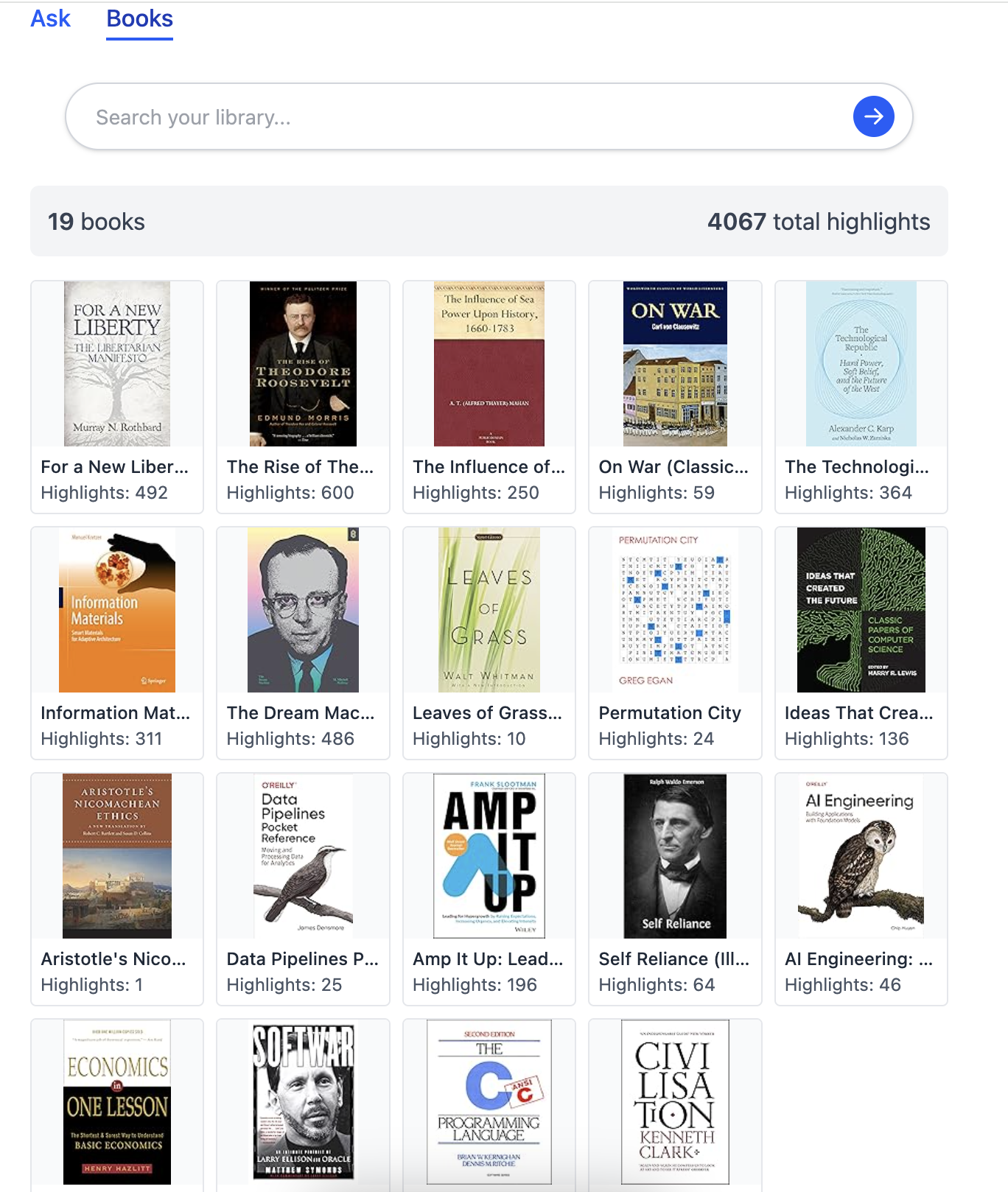
Private property on autopilot
Here’s a short thesis on using AI agents to put rental property on autopilot.
Inspired by Autonomous Economic Entities from the book Accelerando.
Owning rental property implies keeping up with laws, market trends, screening & placing tenants, online listings, and day to day task coordination. Half of all rental properties in the US are under management by companies that make this easy for individuals or commercial clients. They charge 8-15% of rental revenue which adds up to a ~100B ARR industry.
I believe a system of AI tools in orchestration can automate and improve the experience for tenants and owners. The management process is mostly a set of text-based transactional tasks and some in person coordination. Adding foundation models to these workflows would drop the cost of management and improve property investments for customers.
For example, for day to day operations, an assistant that can interact with tenants and coordinate multiplayer solutions is worth exploring. On the demand front, from crawling listings you get pricing information, customer trends, and other visual data to improve vacancy rates, marketing materials, and discover optimal renting prices.
I had a parking problem
If you live in a dense area of San Francisco, you can’t consistently park on the same street. And because every street has its own cleaning schedule you have this constant overhead to track and move your car before you get a 90 USD ticket.
I got 7 last year, there were 500K overall in 2023 so it’s a common problem and I could use some automation. Here’s what I’ve built:
Using the street line segments and schedule pairs:
-
Calculate the bearing angle for each street line which is the orientation considering Earth’s shape.
-
Offset it orthogonally to distinguish block sides (N,S,E,W).
-
Use GPS ping to search line segments and block sides. Brute forcing this was super slow ~700ms so I divided the city into a grid to check for membership, bringing it to <5ms.
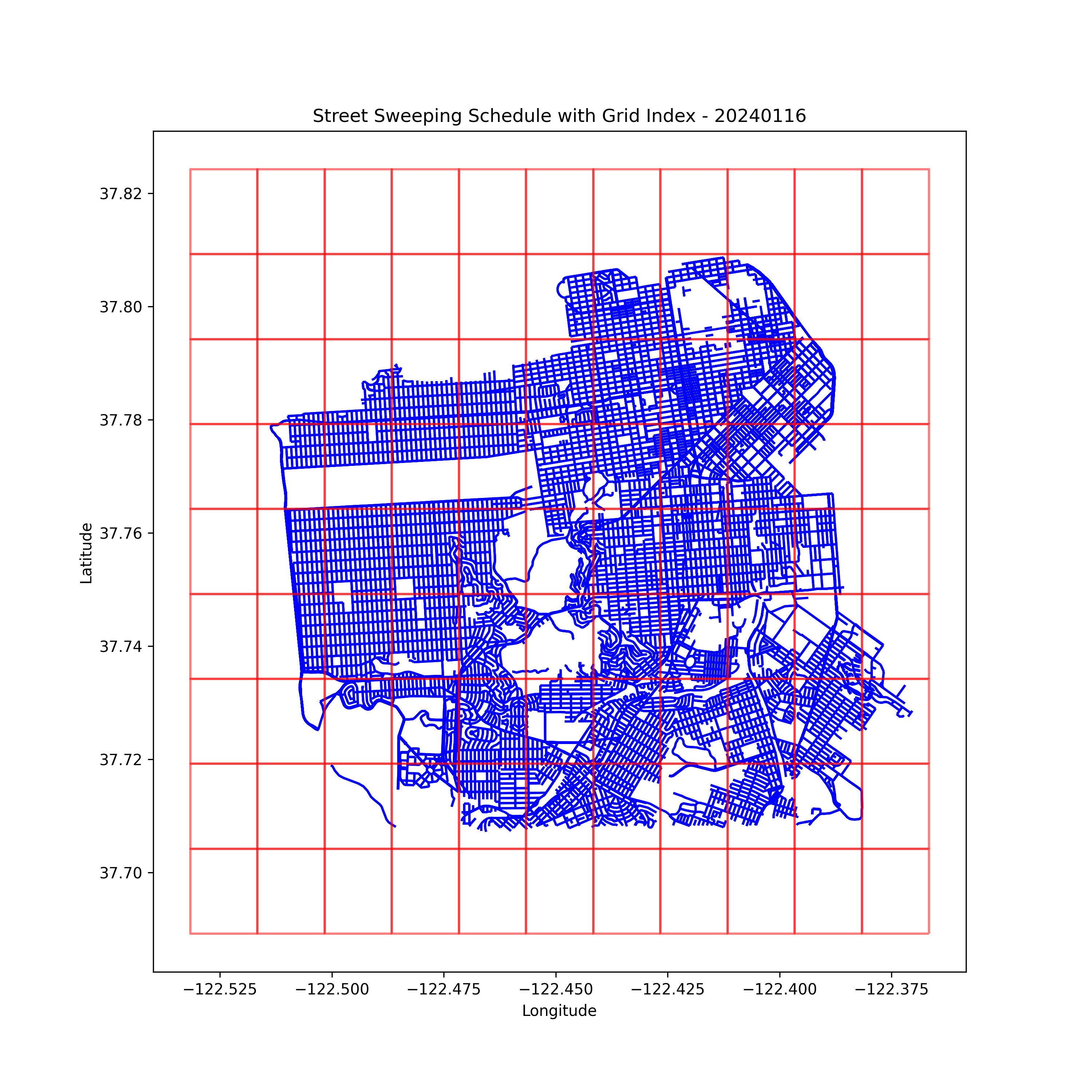
To get users I posted on Reddit, once to get beta testers, and then a second time announcing the App Store launch:
Stats:
- 300K views, 2K upvotes, 700 shares
- 250 downloads in first 24hrs with 14 paying subscribers, 5% conversion
- 350 testflight users, 27 have left detailed feedback
- Local media ran a story online, tv, and radio
Here’s the first release:
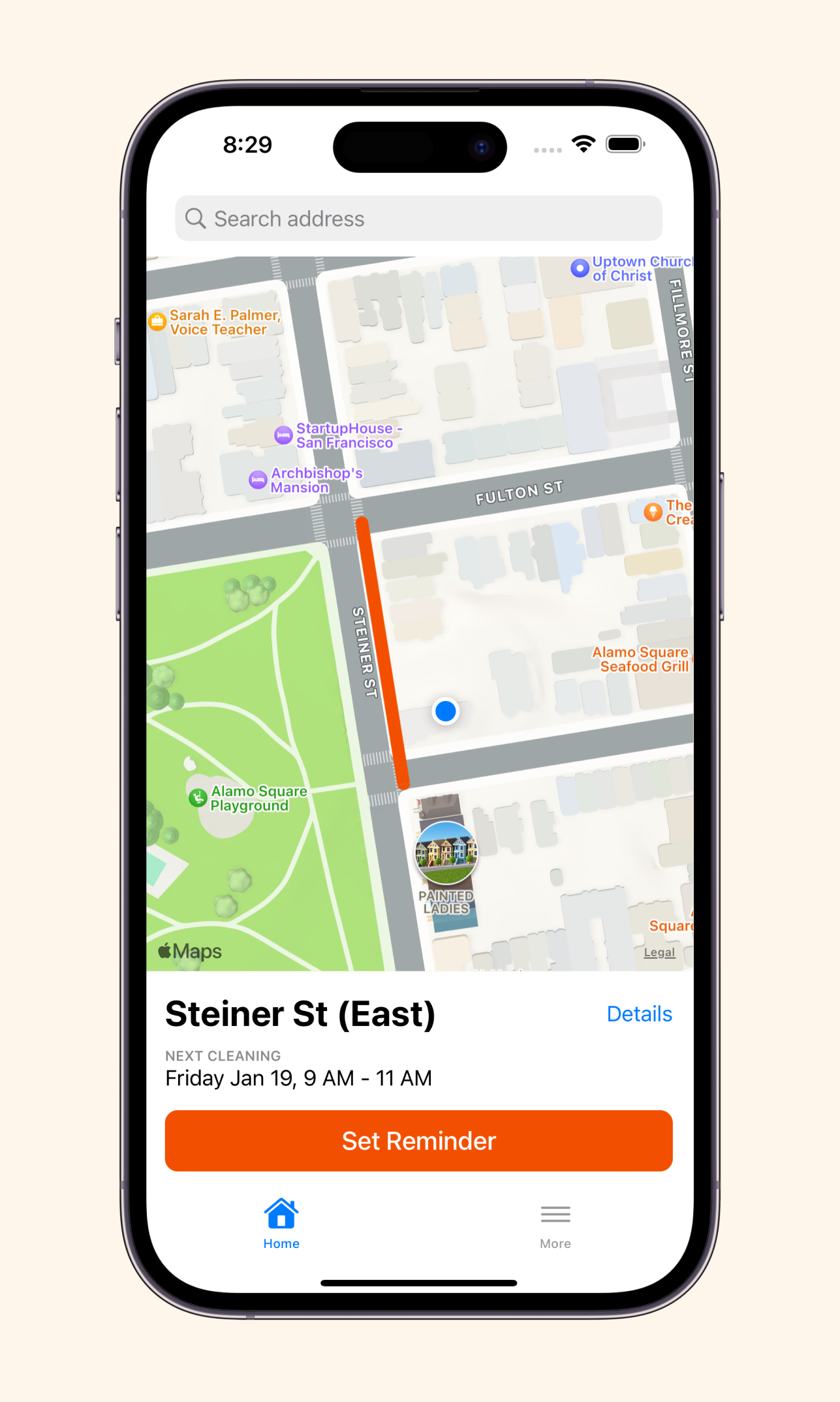
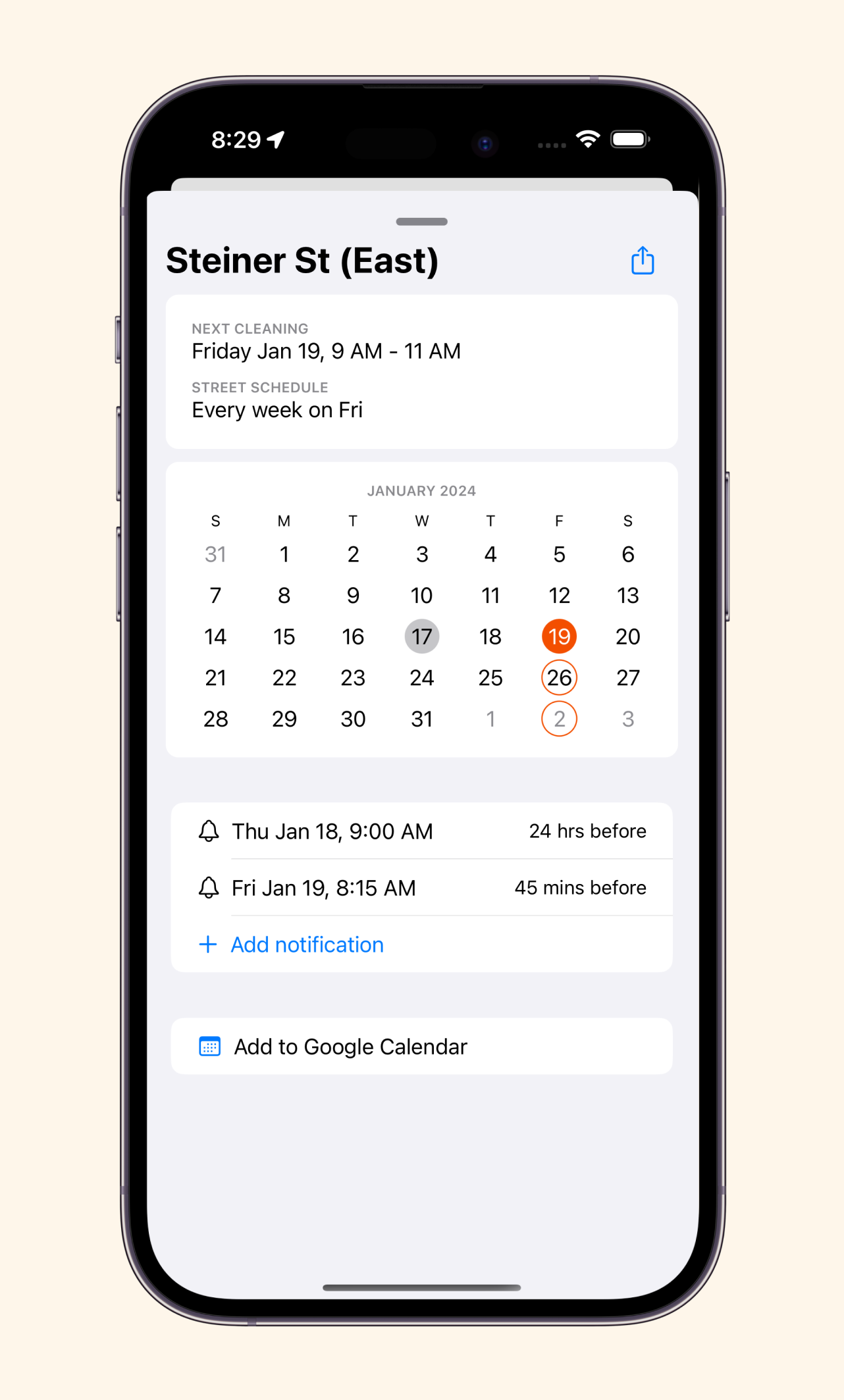
LLMs on widgets
Combining RAG with widgets to answer queries.
- LLM-based query classifiers
- Productized at Perplexity AI
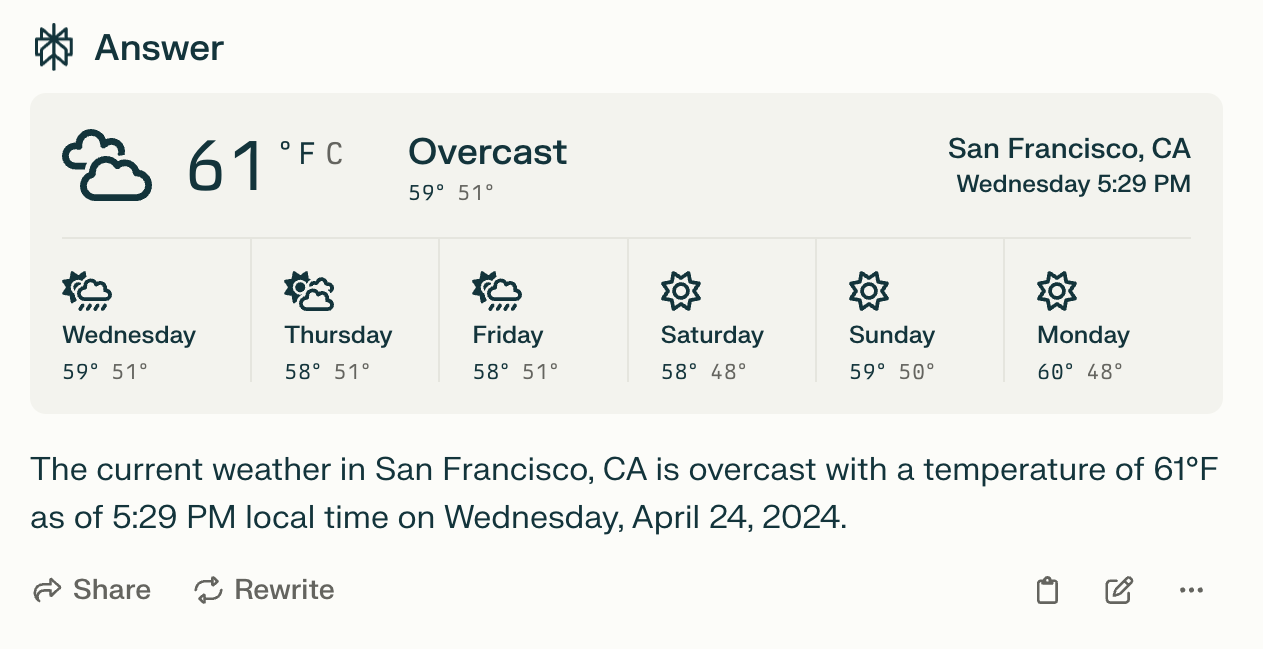
Pushing a rate limit to capture uncontested markets
An observation about big gains in technology is that it is the result of pushing a rate limit to the extreme.
Most people think that the limit has a reason to exist, so they will play around it, scraping with many others marginal innovations and leaving no outsized winners.
Very few wonder what would happen if you push that rate by 10X or 100X. I think it’s because it takes two realizations. The first is that the limit is rarely physics based, therefore it can be improved with lots of engineering, and, that the 2nd order effects are extremely hard to predict, so it’s not obvious what it unlocks.
The biggest recent innovations have this signature. The people that worked on them don’t have good predictions about the 2nd order effects, so they figured out the scaling and worried about the business opportunity later.
Tesla pushed Wh/area to unlock the best performing cars. SpaceX pushed tonnage to orbit to unlock satellite communication. OpenAI pushed neural net parameter count to unlock chatgpt. Neuralink is pushing bits/s between brain and computers to unlock …
These teams focus on dramatically increasing rate limits and then capture the huge opportunity that arises uncontested.
LLM playground
Tools to run language tasks on user content.
- Top 10 product of the day on Product Hunt with 700 active users
- Multi-turn conversations with citations and chat history
- Headless browsing to crawl sites
- Speech recognition models to transcribe user videos
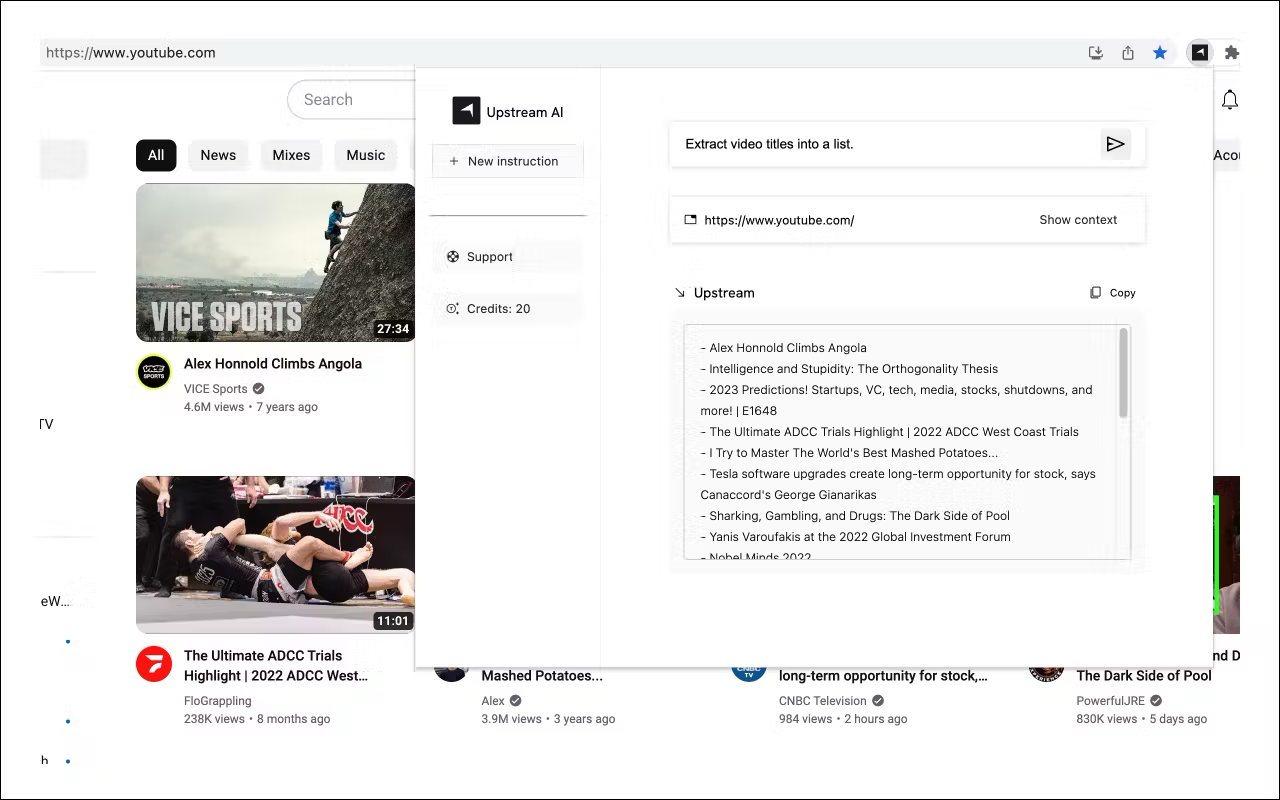

ProductOS
Tools to build better products faster.
- Dynamic configs to control code remotely
- Feature flags and A/B testing
- SDK to capture events and analytics
Configuration is the future of software
There are two trends shaping the future of software: engineering platforms and AI-assisted coding.
Self-service organizations
In the last 10 years, a key theme at tech companies has been to build replicable workflows with self-service capabilities, also called engineering platforms.
The idea is to build internal tooling that covers 80% of uses cases, then abstract these into easy-to-use interfaces, and let developers independently bring their own inputs while the platform handles the rest. Everything from machine learning, experimentation, analytics and deployment are undergoing this process of platformization.
Platforms make sense because they lower coordination costs, reduce scopes to favor reliability and scale, and specializes labor to distinguish between building product features and infrastructure.
Writing code with AI
Large language models like Codex are showing incredible results when applied to writing code. Today they are able to autocomplete functions with high accuracy, and it is reasonable think that they will be able to generate full components within the next 3-5 years. The challenge is to figure out which inputs, typically referred as prompts, yield your desired code outcome. Over time, it is easy to see ways in which prompt engineering will become a new paradigm to instruct computers with directed goals instead of specific instructions.
From business requirements to configurations
These two trends give us a future of accelerated software development, underpinned by an architecture of replicable and reliable workflows that provide user experiences. Software is often thought of as translating business logic into code. But what if code is easy to generate and scale? I believe businesses will largely focus on reconfiguring their systems as new market opportunities present themselves.
The most upstream element in this equation is configuration, which is the initial parameters that modify the behavior of applications. Think of configuration as the settings to control and manage a business: resources, experiments, product features, pricing, modeling.
The future of software is one where code is significantly written by language models while human operators define goals. Like Tesla’s self-driving, software will be about defining where to go, not how to get there.
Narratives in American industry
Moore’s Law was an observation about the improvement of integrated circuits an became the narrative that dictates progress in the semiconductor industry since 1965. What are the observations being made today?
I’ve started to aggregate a few which seem most salient in America today.
Table of Contents
Rethinking defense systems
Restructuring supply chains
Serious entrepreneurs against the malaise
Three pillars of sustainable energy
Highway to space
Rethinking defense systems
In the future of warfare, spending is becoming less correlated with primacy as new asymmetric technologies come online. Exquisite platforms like aircraft carriers and F-35s are less effective against lower cost, distributed, and autonomous systems.
The socialist market economy of China has the structural advantage of being able to diffuse talent and technology from the consumer space – often leaders in autonomous systems – into their defense needs.
In the US, DoD prime suppliers are driven by cost-plus contracts that result in very high costs of innovation. An overhaul can’t happen soon enough, Sillicon Valley is tapping into their defense roots to bridge the gap.
The rate limiters of progress seem to be IP regulation, available ‘patient’ capital, and the security overhead to work with the DoD.
See: The Kill Chain, Rebooting The Arsenal, Unrestricted Warfare
Restructuring supply chains
In the last 50 years, US firms followed the outsourcing model of moving manufacturing overseas to improve margins. Today, at least 94% of Fortune 500 companies have some form of investment in Chinese supply chains.
The unseen effect is a brittle system accruing risk over time. It is like being an old person with a young man’s insurance – sure the premium is low but wait to pay the deductible.
Restoring the industrial base is imperative for national interest as it protects our way of living from being disrupted. The challenge is to do it with a limited labor force and under the high competitive pressure of globalization.
Robotics, retraining and upskilling, immigration policy, and automation are the immediate levers.
See: The Reshoring Imperative, Restoring American Competitiveness
Serious entrepreneurs against the malaise
Legislators’ compensation is not tied to the outcomes of their policies. This is a strong predictor of their ability to advance the infrastructure of our economy – mediocre at best.
Can we increase the Government’s efficacy by parlaying it with free markets?
The bold entrepreneurs and startups attempting to solve these problems have a chance to take on larger shares of GDP – enough to justify the longer lead times on venture capital returns.
See: American Dynamism, A New Industrialist roundup
Three pillars of sustainable energy
The transition to sustainable energy depends on deploying supply, demand and matching technologies – the matching piece is storage.
The rate limiter is access to raw materials for battery cell production. And although the minerals – Nickel and Lithium – are ubiqutuous, the US does not have commerical mining and refining operations for them.
China on the other hand has been on a 30-year campaign to secure mining operations and developing processing technologies. Unless we rethink and allocate capital, the transition is beholden to them.
See: Battery Day, Securing Metals Supply
Highway to space
Space has been historically a low volume, low demand industry given the high CAPEX to move things into orbit. Reusable rockets are dramatically improving the tonnage to orbit cost, sort of the equivalent of opening a highway to space.
Reliable and low cost access to space is critical for national security, connectivity, and deep space research. But there is also the hopes of building an entirely new supply chain around exploiting the properties of low gravity.
See: Starship
Great stories drive progress
An underestimated force of progress is the sources of inspiration around us.
Whether a cook or a scientist, it is not the details but the individuality that connects us all. The ability to reason and mold the world around us.
Inspiration from others abounds but it also quickly fades. A fire starter that you can summon on command and it’s up to us to keep it alight.
One of my favorite sources of inspiration is a chef, Marco Pierre White. His story hinges on a hardcore work ethic and simple ideas that resonate.
The following are extracts from an Interview at Oxford Union (2016).
On beginnings. I came from a very working class world. But a working class world that had self-esteem and pride, they knew their position. The front gardens were always tendered. The back garden is where you grew your vegetables and you dried your washing.
On Simplicity. It’s very easy to overwork and overthink something. The secret is to have confidence in what you do. Why take something and make it something it’s not?
On honesty. I always believed in one thing when I was in the kitchen. Honesty with yourself. Is it within me to win 2 starts in michelin? Do I have what it takes? And I said to myself, “yes”. So I started pushing and pushing and pushing, because it’s about self belief, at whatever cost.
On dreams. It is not you but other people that make your dreams come true. At the end you are just a pied piper, if they’re not prepared to follow you 6 days a week 18 hours a day, it will not come true.
On greatness. If someone asks me, what makes a great chef? I’d say three things:
- They accept and respect that mother nature is the true artist and they are the cook.
- Everything they do becomes an extension of them as a person.
- They give insight into the world they were born into. The world that inspire them and they serve it on their plates.
 MPW (1989)
MPW (1989)
Periods of alternating form and function
Artists are good indicators of alternating periods. They demarcate a change of ideas in order to be distanced from a previous movement – the romanists wanted to be distanced from barrocans, modernists from realists, and so on.
A feature that seems to repeat over time is to alternate between function and beauty. Take architecture, the renaissance favored reason and the functional while the barrocan searched for new ideas of expression, without much concern for utility.
A similar thing happens in the economy. During the gilded age – a period of abundance – society favored romantism and the ethereal (form). Later, as the great depression unfolded, society went back to valuing industriousness and frugality (utility).
With progressing technology, the duration of these periods are getting shorter and demarcation lines are blurred, perhaps we will asymptote towards an average flavor of culture.